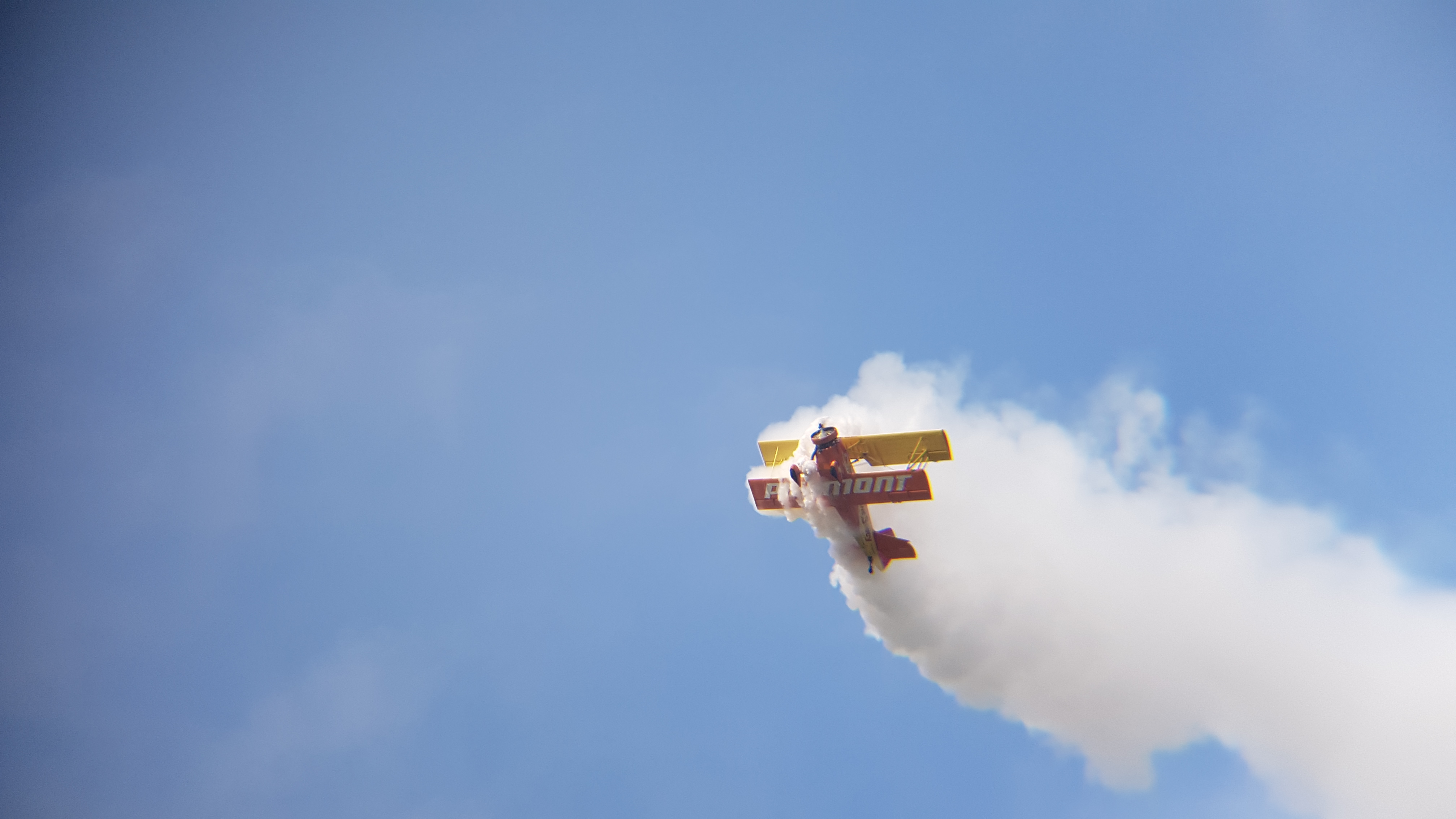This page was created by Jonas Pfeiffer.

This section is dedicated to two things: first to point out some of the dangerous consequences of the aerodynamics of an airplane and second their recovery.
The first one, as mentioned in aerodynamics is the stall. The following video is an online flight lesson which covers stalling and recovering a Piper PA-28.
The second video demonstrates one of the dangers of a stall - the rapid loss of altitude . Also if the correct procedures aren't followed, the aircraft won't recover. Worse, even a slight rudder input, an asymmetric stall or just the torque induced by the propeller can result in a spin.
Stall recovery for the most part consists of lowering the nose of the stalled airplane and applying power. This causes the aircraft to gain speed and smoothens the airflow. Once the speed rises past the so called stall speed (there is no fixed stall speed, but rather an angle of attack, but at some speed the AOA necessary to maintain altitude equals the critical AOA. This speed is typically called and used as stall speed. It is indicated by the lower end of the marking on an airspeed indicator such as this) or reaches a safe airspeed, the pilot may raise the nose and resume level flight. In stall recovery, a certain level of "feel" by the pilot is necessary. Most of the time it is possible to feel whether a plane is able to fly in the current circumstances. For example, in some planes the elevator control goes "soft" and ineffective when the plane approaches a stall. Under no circumstances should a turn be attempted when stalled or nearly stalled.
Turning and
accelerated flight increases the stall speed and thus increases the risk of a stall. This is the
case, because in a banked turn, the load
factor
increases, meaning the airplane needs more lift to maintain altitude (as seen here).
As explained before, a stall occurs at a critical angle of attack. As the required lift is higher in a turn,
this angle is reached at a higher airspeed than in level flight. This means that it is possible for a plane
to fly level and maintain altitude only to then stall when initiating a turn. The following GIF shows the impact of the load
factor on stalling well.
A spin is a form of stall resulting
in an autorotation along an aircraft's longitudinal axis. The flightpath in a spin is a downward
spiral. A spin can result when an aircraft stalls while yawing (regardless if caused by pilot input
or
otherwise). In a developing spin, one wing of the airplane (the inner one in the resulting spin)
stalls while the other does not or
both stall, but one wing stalls more deeply. The lift difference causes the aircraft to roll, while
the drag difference causes the yaw to continue. The aircraft now pitches forward and spirals
downward.
You can see the initiation of a spin and the spin itself in the following video. Please note the
pilot kicking the rudder just before the stall.
The aircraft in this video is an Extra EA-330. As an aerobatic plane, the Extra is fully certified to spin, but in a conventional airplane, a spin is very dangerous. The position of the center of gravity has a major influence on the likeliness and recoverability of a spin. As you can see here, a stall can be very disorientating (also great flight instructor!)
You may have overheard the instructor advising the student to apply more rudder. In some (such as this Robin 2160) airplanes, recovering from a spin may be as easy as applying rudder opposite to the direction of rotation. However as you may have seen, spins can be very disorientating and determining the direction of rotation can be difficult. The normal procedure for spin recovery is:
Improper recovery or other control inputs, as well as a improper CoG position can induce a flat spin. A flat spin is even more dangerous. In it the plane pitches up from the normal spin attitude. This may impede airflow over all control surfaces. There is no general rule on how to recover from a flat spin and it is not always possible. If you ever find yourself in the cockpit of a flat spinning airplane, you can try to apply aileron IN the direction of the spin to recover to a conventional spin. The PARE-method should then safe you. The following links both show a flat spin and recovery. The first one was unplanned and resulted in a non-fatal crash landing (trigger warning) after a somewhat miraculous recovery. The second video shows a planned flat spin with recovery in an airplane licensed to do flat spins (another Extra, this time an EA-300L)
The aircraft in the first video is a Tipsy Nipper. Although it is aerobatic, it is not certified for flat spins. The engine stopped because it was starved of fuel in the flat spin and the pilot was unable to restart it, as the aircraft doesn't have an electric starter (it's hand propped- as seen here ).
The image at the top of the page shows Gene Soucy's "Showcat" (modified agricultural biplane Grumman Ag Cat) stalling. This picture was taken at AirVenture 2018. The AirVenture is the biggest airshow in the world held annually at Wittmann Regional Airport in Oshkosh, WI. Tickets can be found on the official website.